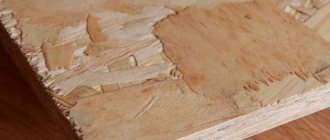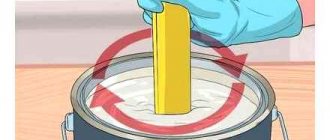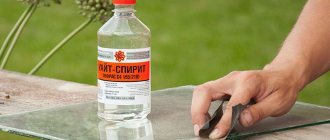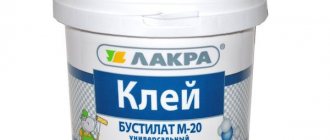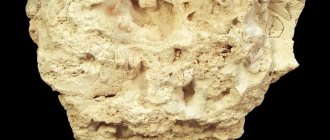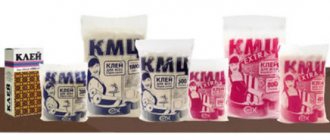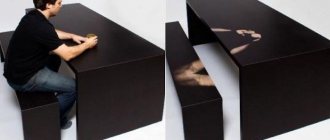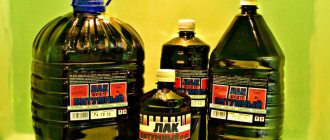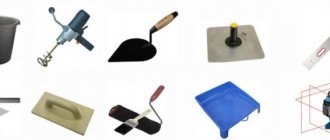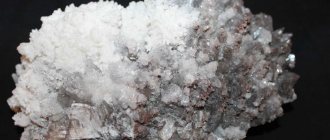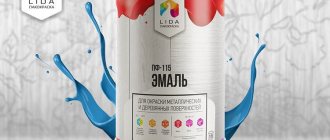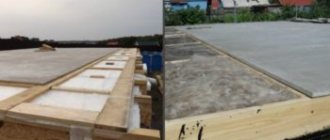What is SHG
This is an environmentally friendly modern building material, which is often used for interior decoration. The boards do not contain harmful components, they are resistant to biological factors and fireproof, and are very easy to install. In terms of its properties, GSP is significantly superior to popular gypsum fiber sheets and plasterboard. The slabs have excellent soundproofing characteristics, which is why they are so popular in construction.
Gypsum board or drywall?
GSP and gypsum board sheets are identical in composition with the difference that in plasterboard the mineral has a paper covering frame, while in gypsum particle board it has a wooden frame. Wood, even in the form of chips, provides a greater degree of rigidity than cardboard, which, moreover, is often damaged during installation and the surface loses some of its performance properties.
From the point of view of sound insulation, the advantage of GSP is also obvious - the sheet dampens up to 35 dB, drywall does not exceed 28 dB.
It is difficult to say unequivocally which material is better: both types of sheets are suitable for finishing rooms in different conditions. For example, for covering a living room, gypsum board will be sufficient. But if the room is located in an apartment building, and there are noisy neighbors behind the wall, it is better to give preference to a thicker GSP. Drywall is designed for use in dry rooms on surfaces that are not expected to be exposed to loads and humidity. On the other hand, GSP can hold a small shelf without collapsing.
Compound
Gypsum particle boards are made exclusively from natural components, so the material is considered environmentally friendly for both the environment and humans. The main constituent element is gypsum. Its percentage is 83%, and the remaining 17% consists of wood chips (15%) and water (2%). Because of this ratio, which was developed by specialists and is optimal, the slab has become so popular in finishing and construction work.
The process of making GSP boards is quite simple; for this you will need reinforced wood shavings, gypsum and water. All raw materials are mixed and then pressed using a specially developed method. It is thanks to this that a dense and smooth final material can be obtained.
Composition and production
The composition of the gypsum particle board includes several components:
- Gypsum – up to 83%;
- Wood shavings with bark – about 15%;
- Water for mixing the mixture before molding – 2%.
Interestingly, solid wood with bark is used to produce GSP, rather than wood waste.
All components are thoroughly mixed and the slabs are made using the molding method - the dough is given the desired shape and sent under a press for compaction, after which the workpiece passes through the drying channel.
The production process follows the technology of making slabs from shavings and gypsum, which makes the products durable and dense.
Specifications
This material is very popular because it is completely environmentally friendly. It should be noted that thanks to this, the slabs are perfect for use in children's rooms, hospitals, kindergartens and bedrooms.
The main characteristics are:
- material density - no more than 1250 kg/m3;
- swelling in 2 hours is 2%;
- minimum humidity does not exceed 2%;
- bending strength - 8–10 MPa;
- water absorption in a few hours is 30%;
- linear expansion with changes in humidity is within the range of RH 30% - KR 85% not more than 0.07.
Material characteristics
Quality indicators of GSP slabs:
- Strength. The density of the products is about 1250 kg/m3, so they are able to withstand longitudinal and transverse loads, as well as maintain integrity under significant mechanical stress. Unlike many materials, sheets have bending strength, which is reflected in stability indicators - from 8 to 16 MPa. The gradation depends on the thickness of the fragment.
- Environmentally friendly. The products do not contain components harmful to human and animal health. The only problem may be the suspension that forms during processing, so it is recommended to work with a respirator.
- Fire safety. Due to the gypsum in the composition, the cladding does not spread flame. Unlike drywall, the parts are additionally reinforced with shavings, so they retain their structure for a long time when exposed to fire, which gives time to leave the room. When exposed to high temperatures, no harmful substances are released.
- Moisture resistance. The level of resistance depends on the treatment: standard options have water absorption of up to 30% when kept in water for 2 hours, and parts with a special additive - only 10%.
- Soundproofing. This property allows the panels to additionally protect the room from noise pollution. The insulation index is about 32–35 dB.
- Increasing the energy efficiency of the building. This is achieved due to thermal conductivity, which ranges from 0.21 to 0.25 W/(m°C).
In terms of ecology, there are no restrictions on the installation of gypsum board in residential premises, and the high density and strength of the material allows you to equip any surfaces inside the house.
The material also makes it possible to process and install it exclusively with your own hands and is resistant to mold and insects.
GSP size
The dimensions of the sheets produced at the plant are optimized for use together with other types of similar materials. Plates are produced:
- thickness 8, 10, 12 mm;
- length 0.5, 15, 25, 3 m;
- 1.25 m wide.
The variety of such size categories helps to significantly simplify construction. In addition to standard options, moisture-resistant gypsum particle boards are also produced. Their main difference is the addition of hydrophobic substances to the composition.
One and a half meter long sheets are most often used to form a “dry screed” on the floor. Materials with a thickness of 8 and 10 mm are often sanded, that is, they have a better and more durable surface for further use during lamination and pasting without prior preparation.
Price - GSP gypsum particle board (made in Russia)
| Name of material | Sheet area, m2 | Retail price per sheet including VAT, rub. | Price per sheet small wholesale with VAT, rub. | Wholesale price per sheet including VAT, rub. |
| Gypsum particle board standard (SP) (Russia) | ||||
| 3000x1250x8 | 3,75 | 425 | 406 | 386 |
| 3000x1250x10 | 3,75 | 512 | 488 | 465 |
| 2500x1250x10 | 3,125 | 447 | 427 | 406 |
| 1500x1250x10 | 1,875 | 268 | 256 | 244 |
| 500x1250x10 | 0,625 | 85 | 81 | 78 |
| 2500x1250x12 | 3,125 | 253 | 499 | 475 |
| 1500x1250x12 | 1,875 | 314 | 299 | 285 |
| 500x1250x12 | 0,625 | 100 | 96 | 91 |
| Moisture-resistant gypsum particle board (SP) (Russia) | ||||
| 3000x1250x8 | 3,75 | 479 | 457 | 435 |
| 3000x1250x10 | 3,75 | 565 | 539 | 514 |
| 2500x1250x10 | 3,125 | 488 | 466 | 444 |
| 1500x1250x10 | 1,875 | 293 | 280 | 266 |
| 3000x1250x12 | 3,75 | 652 | 622 | 593 |
| 2500x1250x12 | 3,125 | 564 | 538 | 513 |
| 1500x1250x12 | 1,875 | 338 | 323 | 308 |
The price is valid from 03/01/2015. Prices include VAT
Gypsum particle board (GSP) is a modern, high-quality and high-tech material intended for interior decoration.
GSP is a new material for the Russian market. But the original concept of this material was developed in Germany. Gypsum particle boards were actively produced in Finland, which bought the patent for their production from the Germans. Soon the innovative material, consisting of shavings and gypsum binder, became popular throughout Europe.
The need of the Russian market for gypsum-based building materials prompted the managers of the Peshelansky gypsum plant www.pgz-dekor.ru to create a new workshop equipped specifically for the production of gypsum particle boards. The line was launched in 2010 and at the moment PGZ “Dekor-1” is the only manufacturer of innovative material in Russia.
GSP is distinguished from its competitors by its undeniable advantages - strength and practicality, high fire safety and fire resistance, environmental friendliness, biostability and many other factors. They allow us to call gypsum particle board the best analogue of plasterboard at the moment. The GSP production technology excludes glues and resins in the composition, this determines a high class of environmental friendliness and safety for human health.
GSP achieves all these characteristics by combining the best properties of gypsum and wood. The molding mass, consisting of gypsum, uniformly reinforced with wood chips throughout the entire volume, and water is pressed using a semi-dry method. The outer surface is thus light, smooth and compacted. In percentage terms, the composition of SHGs looks like this:
83% gypsum 15% wood chips, 2% moisture.
In addition, GSP also has a low degree of noise and heat conductivity, the surface of the material is ideally smooth and even. The combination of these qualities makes GSP boards the best option for interior decoration. They can be used for walls, floors, ceilings, as well as for installing interior partitions.
At the moment, the Peshelan Gypsum Plant produces two types of gypsum particle board: Standard gypsum particle board (GSP)
Peculiarities
We already know what SHGs are, so now we need to figure out why they are so popular and so often preferred by builders.
- Significant noise insulation properties. This characteristic is present primarily due to the composition, which includes gypsum and shavings. The use of this material will help isolate rooms from noise within 50 dB.
- Fire safety. It should be noted that gypsum simply does not burn and, due to its properties, perfectly protects shavings from fire at high temperatures. The only thing that needs to be said is that with prolonged exposure to significant temperatures, the slab will simply collapse. But still, it does not support combustion, does not spread the flame and has a minimal smoke emission coefficient.
- Strength. Due to its composition, GSP has a fibrous structure, so the presence of chips also provides reinforcing functions. The material is resistant to high lateral and longitudinal loads and can withstand significant local impacts. According to the results of the study, this material showed itself to be several times better in impact resistance than plasterboard sheets. In addition, this criterion is not affected by air temperature and humidity.
- Thanks to its perfectly flat surface, the sheet material does not require additional processing. There is no need for any preparation before wallpapering, laminating, painting, veneering, or laying tiles.
- Resistance to biological threats. The composition is completely resistant to attacks by fungi and bacteria, and rodents and insects are not interested in it.
GSP in construction and finishing works
The scope of use of GSP slabs is quite wide. They are used as a material for finishing work, for walls, ceilings, even in rooms with high air humidity. GSP boards have fireproof and soundproofing properties, which makes them a fairly popular material.
Gypsum particle boards make it possible to create interior partitions characterized by high levels of protection against impacts and mechanical stress. The scope of application of the products is also the installation of window sills and cladding of slopes. When performing construction work on the construction of frame structures, GSP is an excellent alternative to plasterboard and oriented strand boards (OSB).
GSP sheets have also found their application in flooring. These are both dry screeds (prefabricated base) under the floor covering, and the final version with a facing covering. Gypsum particle board, unlike gypsum fiber sheet (GVL), provides a high level of mechanical strength, which is not affected by high humidity.
A product such as GSP is applicable in various premises. These are office rooms, bedrooms, children's rooms, living rooms, bathrooms. Simplicity of installation and ease of processing of GSP minimize both labor costs and money, since the consumption of building materials is saved. GSP boards make it possible to translate even complex construction solutions and unusual designer ideas into reality.
An undoubted advantage of GSP is the ability to subject the material to various types of finishing. Its surface can be painted, covered with wallpaper, tiled, laminated, covered with decorative materials, and finished with veneer. This is all possible thanks to the perfectly flat surface of the slab, which can even be covered with a film coating without any preparatory work.
Flaws
The main disadvantage of the material is inconvenience in work. The main factor is significant weight. It should be noted that a 3-meter sheet with a thickness of 12 mm weighs 56 kg, so it is impossible to avoid difficulties during installation, unloading, and especially when lifting to a height. It is recommended to use thinner materials for ceiling cladding.
What GSP is is known, so it should be noted that it is quite difficult to process. For a circular plate, it is recommended to use carbide-tipped disks; you can also use a jigsaw, but it should be noted that the files will need to be changed much more often than usual. Using an angle grinder can greatly simplify the process, but this method will raise a large amount of dust, which will become a serious problem in small rooms.
Areas of application
All GSP sheets are divided into two types: regular type and GSP. The second type has increased resistance to moisture. Gypsum particle board is used for both the initial and final laying. It is customary to divide it into:
- panels for painting;
- vinyl;
- coated with polyvinyl chloride;
- having a polymer lining variety.
It is also necessary to take into account that a moisture-resistant board can be used much more often than a conventional type. However, it will cost much more. As a result, it is actually used mainly in damp rooms where there is a direct need. In general, the following options are known:
- wall;
- partitions;
- flooring.
Wall coverings usually require a higher degree of evenness. It is very difficult to achieve the same effect using plaster treatment, and it will take a lot of time. In addition, chip sheets reliably contain extraneous noise and heat loss. GSP partitions are characterized by excellent density and rigidity, which makes them more reliable and durable. There will be no special installation requirements.
In addition, GSP can be used for:
- finishing of ceilings;
- rough leveling of walls in new buildings;
- laying the subfloor.
Application
Based on technical features, such sheet materials occupy a significant place in finishing and facing works, as well as in the installation of small frame structures, and in the installation of multi-level ceilings and partitions. The use of GSP is especially important in places where increased sound insulation, fire safety and resistance of the floor and wall to point and impact loads are required.
In frame construction, the material is often used as an alternative to expensive OSB and less durable drywall. Such sheets are also very often used for installing door and window openings, as well as window sills.
Advantages of GSP slabs
- Ecological cleanliness. This quality of the product allows it to be used both in the bedroom and in the children's room. There are no glue or other substances harmful to health;
- Fire safety . The gypsum included in the product is a non-flammable substance that protects wood chips from burning;
- Moisture resistance . Installation of slabs can be carried out where exposure to moisture is not constant. These are bathrooms, both in houses and hotels, buildings without year-round heating;
- High strength, impact resistance and wear resistance. These properties are ensured by the structure of the product itself. Reinforcing the slab with wood chips results in fewer deformations during installation and operation, as well as a dense, durable surface;
- Noise insulation . Low sound conductivity is a definite plus when finishing floors and walls in a house;
- Ability to regulate air humidity . The natural property of gypsum is that it takes excess moisture from the room and releases it back when there is a deficiency. This quality ensures optimal microclimate in the living room;
- Simplicity and ease of installation . Gypsum board is an undemanding building material. After installation, it can be covered with wallpaper or covered with decorative materials;
- Biostability . The product is not affected by mold, bacteria, fungi, insects;
- Ready option for finishing . A popular solution is to finish wall and hanging panels with veneers of various types of wood. Such panels have excellent acoustic characteristics, are environmentally friendly, and are easy to use. And the appearance of natural wood creates an atmosphere of comfort in the room.
Features of installation and processing
In order to process GSP boards, you will need a standard set of tools, which are used for any other “dry” finishing:
- A round cutter or electric jigsaw if you need to make any hole or make a round cutout.
- Circular saw with reinforced teeth, as well as a dust collector.
- Hand saw - it should be noted that this device will only be needed when you need to make small cuts.
Installing slabs is practically no different from a similar process when working with other finishing materials. They need to be placed on a wooden frame using hardware and glue.
Particular attention must be paid to the process of direct cutting, and this is a little more difficult than with standard drywall. An increased level of dust formation can be a very annoying surprise, so you need to prepare in advance and install a dust collector.
There are also some peculiarities when working with self-tapping screws. It is not possible to easily place the hardware in the hole using a screwdriver, so you will need to pre-drill the container, and only then recess the head of the screw into the surface of the GSP. The angle at which the fastener enters should be 90 degrees, and the gap between adjacent elements should be 25 cm. Experts recommend using several layers of material to avoid cracks. If a slab of large thickness was chosen, then such a problem as cracks will not bother you.
Advantages and disadvantages of SHGs
After considering the material from all sides, we will summarize by collecting the advantages of GSP:
- Environmentally friendly material, suitable for use in all areas. A frame house can be created from gypsum boards up to 70% of the building volume!
- High strength and wear resistance ensure optimal operation without the use of additional hangers, stiffeners, etc.
- GSPV tolerates moisture better than GVL and is suitable for installing partitions in wet rooms.
- The material is compatible with any type of finishing from wallpaper to plaster and tiles.
- Fire safety of the material is one of the main advantages. The flammable component (chips) is sealed in a non-flammable binder (gypsum), so maintaining and spreading a flame is impossible.
- Simple and convenient installation using the same technology as when working with conventional sheet materials.
SHGs have few disadvantages:
- Heavy weight. The material is not easy to install alone - the approximate weight of a 1 cm thick sheet reaches 47-50 kg!
- Use only indoors due to fear of getting the plaster wet;
- Large dust formation during cutting. The disadvantage is eliminated by the use of dust-collecting equipment.
There are no ideal materials. Like others, GSP has its advantages and disadvantages, which must be taken into account when choosing sheet products for surface cladding.
Dry floor screed
What GSP is is already known, and it is clear what it is used for. In this case, it is necessary to first clear the floor of debris, and then lay out a protective polyethylene film, the edges of which must be stretched over the walls. A sheathing is placed on top of it, onto which the sheets will be subsequently attached. Expanded clay should be poured between the profiles, this will create an excellent insulator layer.
It is recommended to carry out the installation itself in several stages. The first layer is placed directly on the guides, after which it is generously smeared with PVA and becomes the basis for the next layer. It should be noted that additional fastening of the sheets together with the frame is done with self-tapping screws, which are placed in increments of a third of a meter.
The seams of the second layer slabs must completely overlap the seams of the first. It is important to know that where such a floor meets the wall, it is required to leave a technical gap of 1 centimeter on all sides. In the future, this distance will be filled with a special edge tape.
At the final stage, you will need to fill in all the recesses that were left due to the heads of the screws, and cover the resulting distances between the plates with putty. After the material has completely dried, its top layer is sanded until it fully matches the floor level.
Handling, transportation and storage
This material is not only easy to cut with any circular saw or hacksaw, but also with an electric jigsaw or reciprocating saw.
Despite the fact that gypsum is not an abrasive material, using a tool without carbide or diamond coating leads to rapid dulling.
Therefore, a hand saw and a reciprocating saw blade must be sharpened frequently, and jigsaw blades must be changed frequently.
Good results are obtained by installing a ceramic file on a jigsaw .
For milling, a manual milling machine and cutters with carbide knives are used. For drilling and countersinking, use conventional (they often have to be sharpened) or carbide drills for metal.
When processing gypsum particle boards, a lot of dust appears, so it is necessary to use a tool with the ability to connect a vacuum cleaner or ventilation , as well as protective equipment, that is, a respirator and goggles.
In addition, when cutting the material, there is a high probability of breakage due to the large weight of the cut piece and low fracture strength.
Therefore, when cutting pieces with a width of 10 cm or more and a length of more than 40 cm, they must be supported to avoid breaking off and damaging the material.
You can install only small pieces of GSP alone; to install a whole slab, 2-4 people are needed, one of whom will drill holes and attach the material to the frame, and the rest will hold the sheet in place.
Holes for installing electrical appliances in gypsum particle boards are cut using cutters . If the shape of the hole is different from round, then use a jigsaw with ceramic tiles.
to carry material 1.5 meters or more in length together , because when carried alone, it begins to vibrate and may break.
Full-size sheets, 2.5–3 meters long and 125 cm wide, should preferably be carried by three people to avoid excessive bending.
GSP should be stored in ventilated areas , laying the material in stacks on the front or back surface.
Before laying, it is necessary to thoroughly clean the place for them, because any small stone will damage the surface of the sheet and the hole will have to be filled.
To sum it up...
Of course, everyone decides for themselves what material to make the walls from, and in my case, the partitions on a profile frame. But I probably wouldn’t go this route a second time, but would simply lay out the partitions from foam concrete or a gas silicate block.
1) A wall made of GSP will be very expensive. More expensive than any other wall. 2) The impact strength of the slab is good, but hanging something heavy on it is scary because the method of fastening will be very different from the advertising video from the Peshelansky plant. And from videos made by corrupt or stupid people (underline as appropriate) from reviews. 3) Stupid sheet dimensions. All frames, insulation and even the manufacturer’s instructions regulate the distance between the posts to be 600mm, while the sheet has a width of 1250mm, which turns installation into a hemorrhoid when it comes to selecting materials and sizes. 4) Logistics and packaging quality are zero! Broken sheets are already leaving the plant - this is disgusting! Disgusting and nothing more! But buying SHGs turns out to be not so easy. 5) I didn’t find any difference between GSP and GSPV either in color or properties. Oh, the price is different too 
Ahead of me is the installation of this miracle slab on the Knauf profile. Upon completion, I will definitely write an article about how it was. But unlike gypsum boards, installation must be done with at least 4 strong male hands! And I dealt with the gypsum board alone, albeit not without difficulty.
INSTALLATION FINISHED! Read the review on GSP installation here:
Installation of slabs
There are two methods of fastening gypsum particle boards - using construction adhesive or by mechanical rigid fixation. In both cases, before installation work, the target surface should not only be leveled, but also thoroughly cleaned. Further, depending on the method of fastening, a number of technical preparatory measures are carried out. For example, fixing with hardware may require creating holes and installing profile sheathing. The gypsum particle board is then mounted on screws, dowels or mounting brackets in accordance with the intended installation configuration. If the adhesive method was chosen, then the pre-prepared mixture should be evenly applied to both the work surface and the panel. This is also followed by direct fixation of the material.
